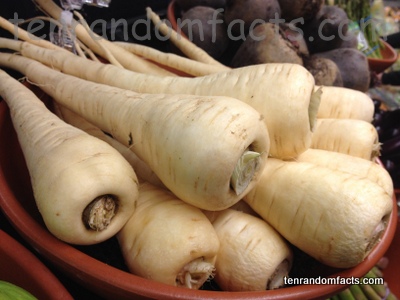Don’t parsnip these facts!
- Parsnips are vegetables and the root of the annual or biennial plant Pastinaca sativa, and there are a number of varieties available.
- Parsnips are native to Europe and Asia, and are from the family Apiaceae, family of carrots, celery and parsley.
- Parsnips become sweeter during a frost, due to some of the starch being converted to sugar.
- Parsnips are cream in colour, and are typically conical in shape.
- Parsnips can be eaten either raw or cooked, in soups, stews or casseroles; as well as side vegetables, made into chips or used as a starch replacement.
- Parsnips were popularly eaten in Ancient Rome, and were sometimes confused with carrots due to similarities in colour at the time.
- Parsnips, in Europe, were commonly used to sweeten foods before sugar cane was introduced.
- The sap of the foliage on parsnip plants is poisonous, which can cause a type of burn on the skin.
- Parsnips have a sweet flavour and a taste of nuttiness and anise, and are high in vitamin C, maganese, folate and fibre.
- Parsnips, before harvest, are firm, but when harvested, turn soft, and are best stored in the refrigerator.
Bibliography:
Parsnips, 2014, Nature’s Pride, http://www.naturespride.eu/our-products/product-detail/parsnips/
Parsnip, 2011, Fresh for Kids, http://www.freshforkids.com.au/veg_pages/parsnip/parsnip.html
Parsnip, 2014, Wikipedia, http://en.wikipedia.org/wiki/Parsnip








love it thanks for doing this